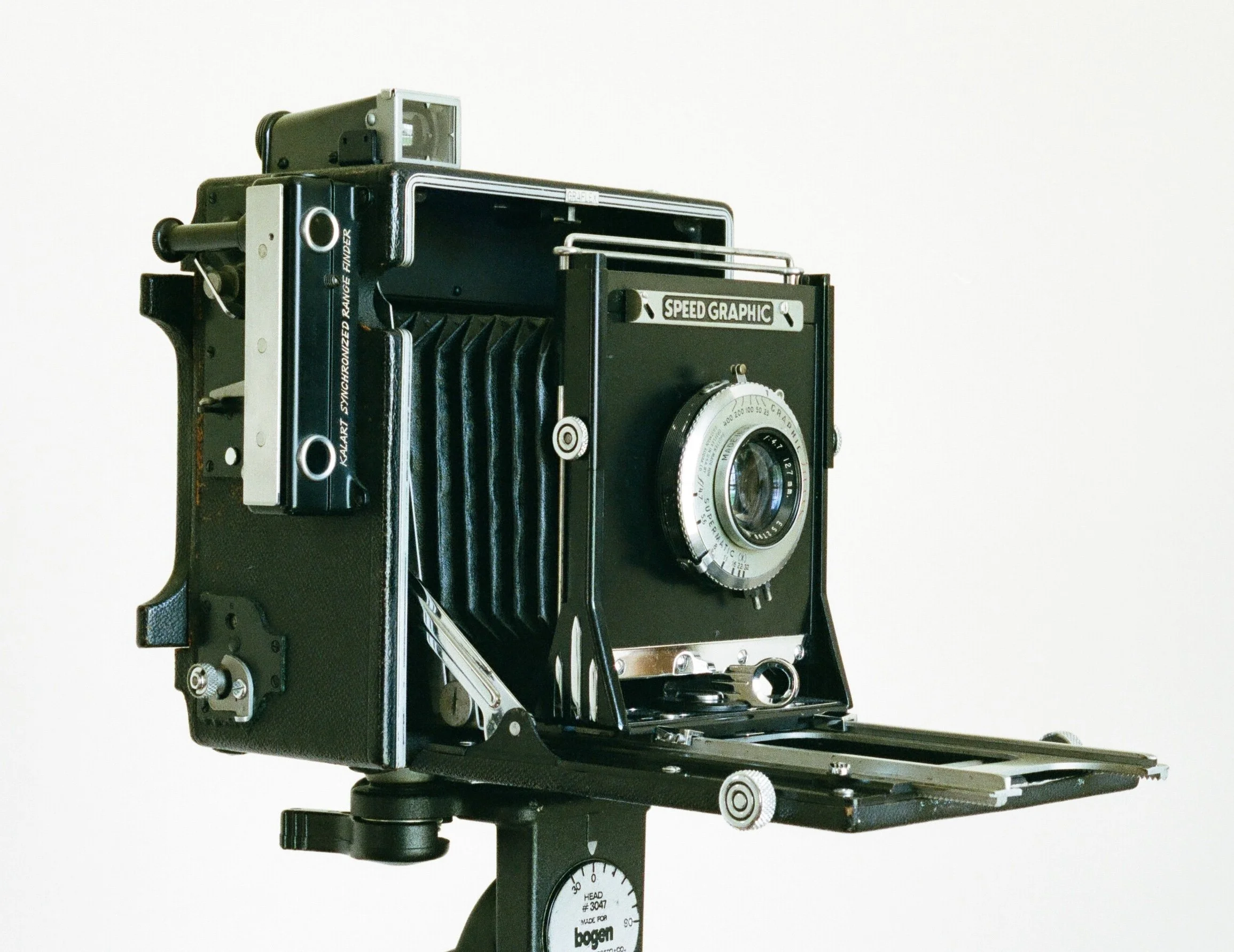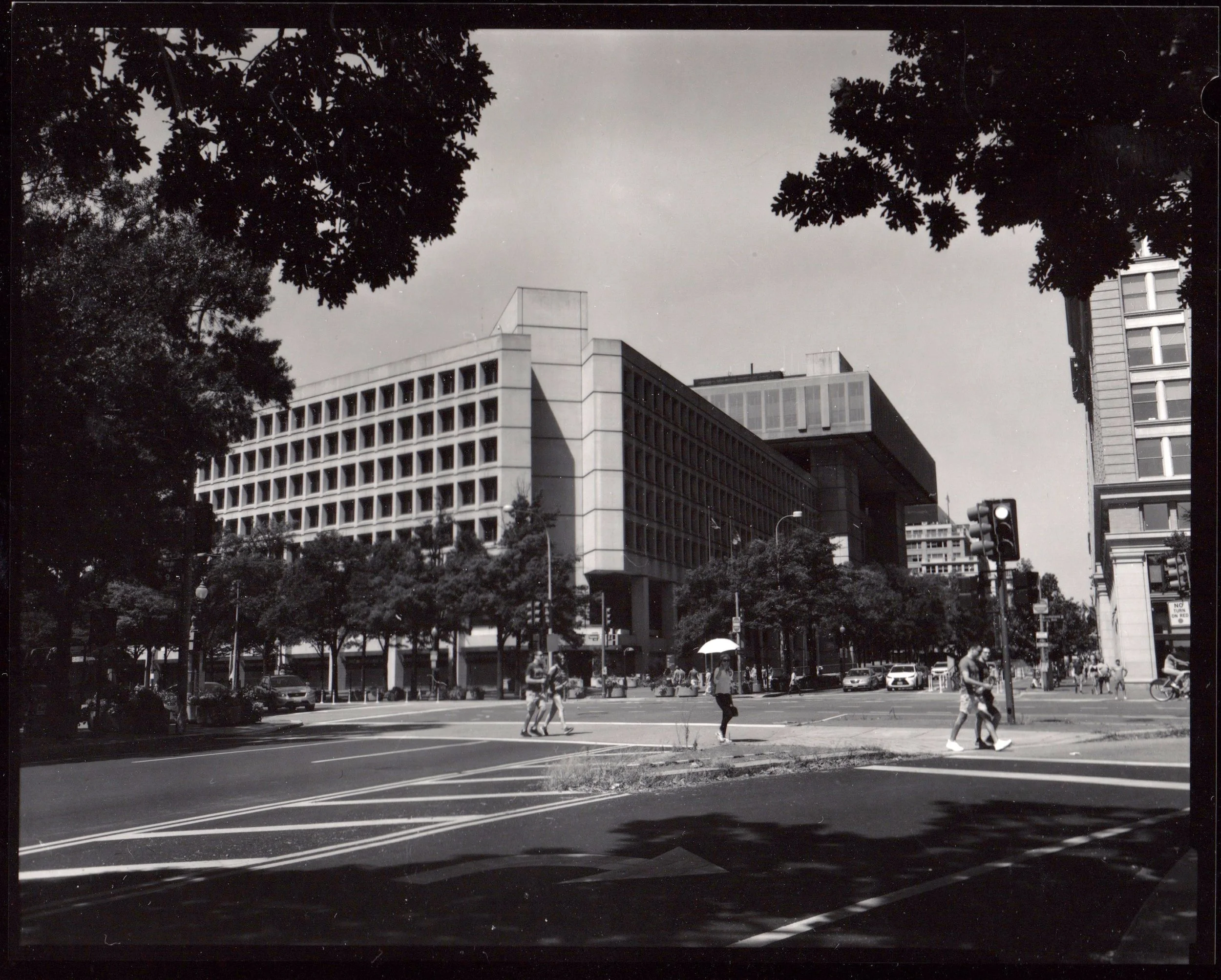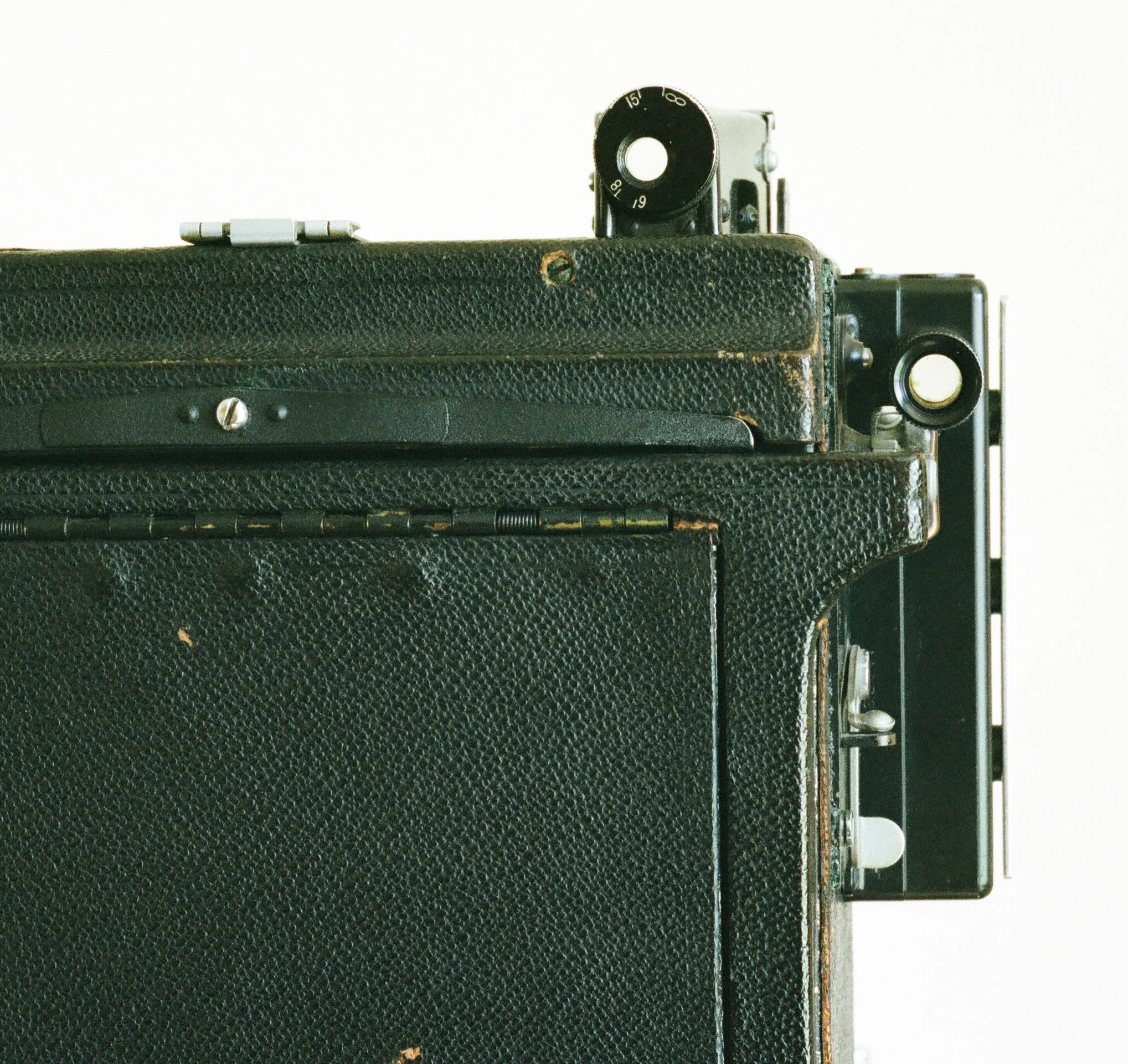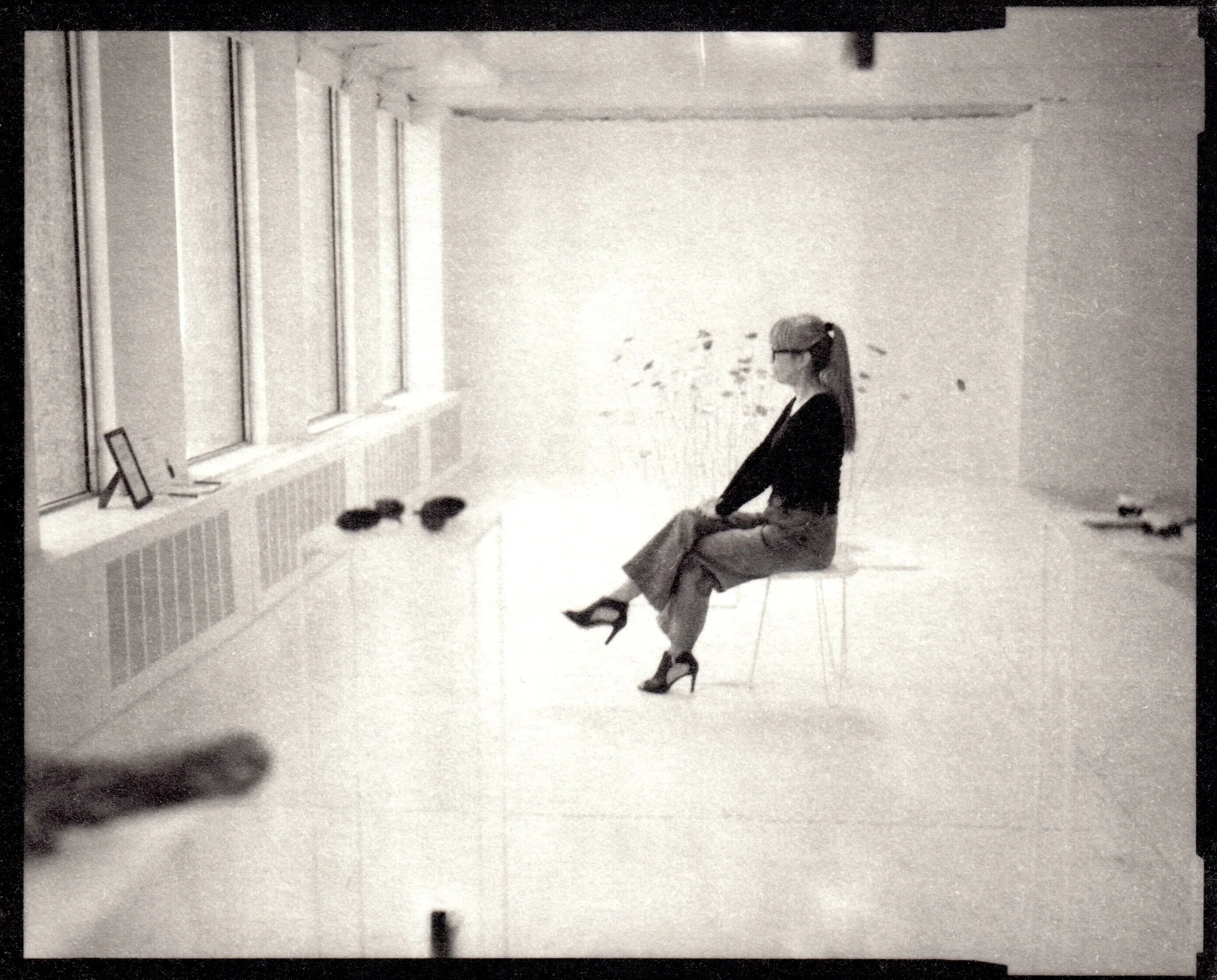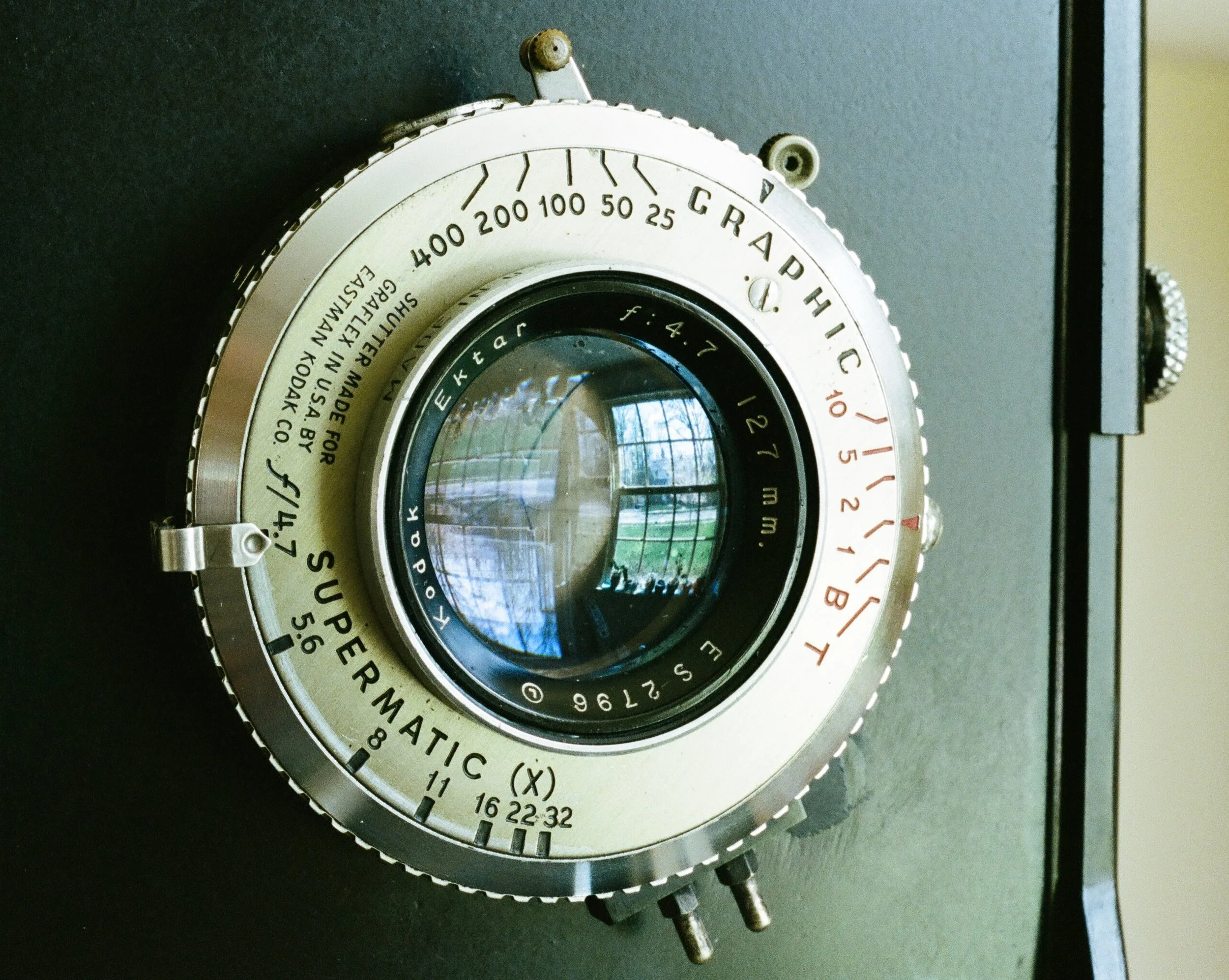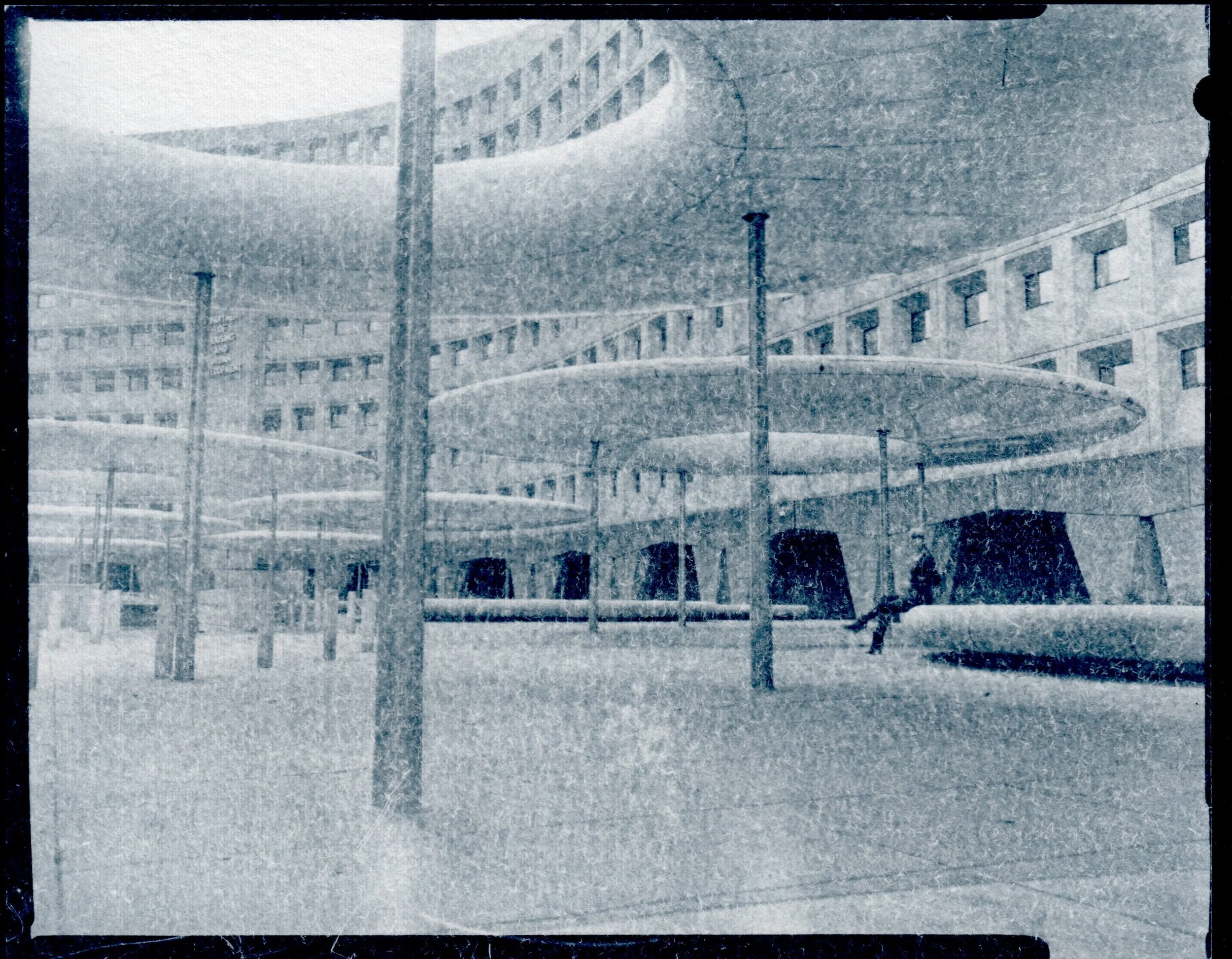4x5 Speed Graphic
Standard issue camera of newspaper photographers in the 1930s and 40s.
4x5 Speed Graphic with a 127mm f/4.7 Kodak Ektar lens. Shown here on a tripod, but I use it hand held. (Color photos of the camera were made with a Nikon F, 55mm f/3.5 Micro-Nikkor-P.C, and Portra 400.)
4x5 Speed Graphic.
Weegee
The star American news photographer of the mid-20th century was Weegee (Arthur Fellig), and he had this advice on photo gear:
‘The only camera I use is a 4x5 Speed Graphic with a Kodak Ektar lens in a Supermatic shutter, all American made… if you are puzzled about the kind of camera to buy, get a Speed Graphic… for two reasons… it is a good camera and moreover, it is standard equipment for all press photographers…’
Weegee’s photography included a lot of crime scenes so I brought my Speed Graphic to the FBI building:
FBI Headquarters (Washington, D.C.) Negative: 4x5 Speed Graphic, 127mm f/4.7 Kodak Ektar, Arista-Edu 400. Contact print on Foma Retrobrom 151 SP Grade #2 FB paper. Negative and print: 2023.
Hand held 4x5 photography — The Speed Graphic’s super-power
Most large format cameras are view cameras, which need to be mounted on a large, heavy tripod. The Speed Graphic works great on a tripod, and it has a ground glass just like a regular view camera.
And it also has hand held capability, which newspaper photographers needed to capture breaking stories. The Speed Graphic has a viewfinder and a rangefinder so composition and focusing can be done with a film holder in place, ready for exposure. Ergonomics are not as smooth as with a smaller camera, but it works.
The photos made with the Speed Graphic on this page, were exposed hand held.
With my Speed Graphic, four film holders, a light meter, and a small notebook all packed in a standard student backpack, I’m ready for a hand-held, on-location photo shoot. The location can be out of town or overseas, because the Speed Graphic kit fits under the seat on an airplane. In economy class.
For hand held work, the camera has a viewfinder (top) and a rangefinder (side)
Artomatic (Washington, D.C.) Negative: 4x5 Speed Graphic, 127mm f/4.7 Kodak Ektar, Arista Edu 400. Platinum-palladium print on Hahnemühle Platinum Rag paper, from original camera negative. Negative and print: 2024.
The Anniversary Speed Graphic
The Speed Graphic was in production from 1912 to 1968. Depending on the generation, they were available in formats ranging from 2 1/4 x 3 1/4 to 5x7. The production dates for the 4x5 models were:
Early, or top handle: 1912-1927
Pre-Anniversary: 1930-1940
Anniversary: 1940-1946
Pacemaker: 1947-1968
(Sources: McKeown, 1996 for the early model and the last year of Pacemaker production; Holden, 1958:196-197 for the rest.)
Mine is an Anniversary Speed Graphic. The camera, lens, and shutter are as in the photo, ‘Weegee and his love — his camera’ on p. 10 of Naked City. Gustavson (2011) explains the name: ‘In celebration of fifty years of camera manufacturing, in 1940 the Folmer Graflex Corporation introduced the Anniversary Speed Graphic’.
This is the quintessential Speed Graphic.
127mm f/4.7 Kodak Ektar lens in a Supermatic shutter. The Speed Graphic has two shutters: this one and a focal plane shutter at the rear. My camera’s focal plane shutter doesn’t work. That’s ok, I wouldn’t use it anyway because the Supermatic shutter is quicker-acting.
The Speed Graphic and the Graflex
The other prominent American-made hand held large format camera was the Graflex, a very different design from the same manufacturer. As its name implies, the Graflex is a reflex camera, an SLR. That makes it large and heavy. The Speed Graphic is the clear choice when portability is a priority, which is a lot of the time.
See my 4x5 RB Auto Graflex page for a discussion of the two cameras.
Delft, Netherlands. Negative: 4x5 Speed Graphic, 127mm f/4.7 Kodak Ektar, Arista Edu 400. Platinum-palladium print on Hahnemühle Platinum Rag paper from original camera negative, Negative and print: 2024.
References / further reading
Camera manual: orphancameras.com
More references:
Gustavson, T. 2011. 500 Cameras: 170 Years of Photographic Innovation. New York: Fall River Press. The 500 cameras are from the George Eastman House Technology Collection, Rochester, N.Y.
p. 306: an article on the Anniversary Speed Graphic, with a photo of one: ‘This very camera was used by Pulitzer Prize=winner Joe Rosenthal to capture the famous flag-raising at Iwo Jima in 1945’.
Holden, T.T. 1958. Graphic & Graflex Equipment. Chapter 17 in W.D. Morgan, Graphic and Graflex Photography, 11th ed. New York: Morgan & Morgan.
McKeown, J.M. and J.C. 1996. McKeown’s Price Guide to Antique and Classic Cameras, 1997-1998. Grantsburg, Wis.: Centennial Photo.
p. 226: an illustrated description of the various generations of this camera.
Morgan, W.D. 1958. Graphic Graflex Photography. 11th ed. New York: Morgan & Morgan.
Pritchard, M. 2015. A History of Photography in 50 Cameras. Buffalo, N.Y.: Firefly Books. The Speed Graphic is camera no. 30.
p. 134: ‘Between 1942 and 1954 all the Pulitzer Prizes for photography were taken with Speed Graphic cameras…’
Also on that page: ‘Photo-historian Beaumont Newhall described Sam Shere’s widely published photograph of the 1937 Hindenburg disaster (also taken with a Speed Graphic) as “the world’s most famous news photograph ever taken”’.
Talmey, A. Weegee. 1997. Masters of Photography. New York: Aperture.
Weegee. 1945 (reprint 1985). Naked City. New York: Da Capo Press. On the back cover:
‘Arthur Fellig (1899-1968), better known as Weegee, was an Austrian immigrant who worked as a free-lance news photographer in New York City. Beginning his career on the police beat where he specialized in crime and catastrophe, Weegee roamed the city during the 1930s and ‘40s in search of the Page One photo: the image that would stop you at the newsstand’.
L’Enfant Plaza, Washington, D.C. Negative: 4x5 Speed Graphic, 127mm f/4.7 Kodak Ektar, Arista Edu 400. Cyanotype print on Strathmore 300 watercolor paper, from original camera negative. Several hours of water soaking resulted in a less saturated blue tint. Negative and print: 2023.
